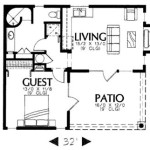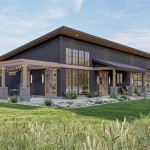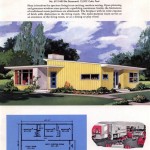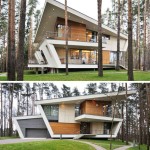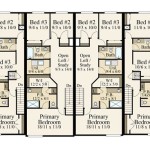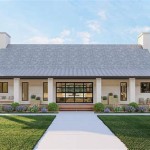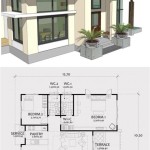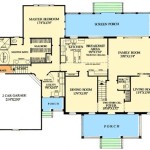5 Bedroom House Floor Plan Design: Exploring the Power of 3D Models
Designing a 5-bedroom house is a significant undertaking, demanding careful consideration of space, functionality, and aesthetics. With the advent of advanced technology, 3D modeling has become an indispensable tool in the architectural process, allowing for comprehensive visualization and optimization of floor plans before the first brick is laid. This article explores the benefits and key considerations when utilizing 3D models in the design of a 5-bedroom house floor plan.
Traditionally, architects relied on 2D drawings to convey their vision. While these drawings offer important information, they often require a high degree of spatial reasoning from the client to fully comprehend the intended layout and flow of the house. 3D models bridge this gap, providing a realistic representation that allows clients to experience the design in a virtual environment. This enhanced understanding minimizes misunderstandings and potential revisions later in the construction process, saving both time and money.
The complexity of a 5-bedroom house floor plan necessitates meticulous planning. Such a house typically caters to larger families or those who frequently host guests, requiring ample living space, multiple bathrooms, and well-defined private areas. 3D modeling empowers architects and homeowners to experiment with different configurations, explore various design options, and identify potential problem areas early on. By visualizing the entire house in three dimensions, it becomes easier to assess the impact of each design decision on the overall functionality and aesthetics of the home.
Furthermore, 3D models facilitate collaborative design. Architects, interior designers, and homeowners can work together in a shared virtual space, making suggestions and refinements in real-time. This interactive approach fosters a sense of ownership and ensures that the final design reflects the needs and preferences of all stakeholders. The ability to easily share and manipulate the 3D model remotely also streamlines the design process, regardless of geographical location.
Key Point 1: Enhanced Visualization and Communication
One of the primary advantages of using 3D models in designing a 5-bedroom house floor plan is the enhanced visualization they provide. Unlike 2D blueprints, 3D models offer a photorealistic representation of the proposed design, allowing clients to virtually walk through the house and experience the space as it will be in reality. This level of immersion greatly improves communication between the architect, the client, and other stakeholders, ensuring that everyone is on the same page.
The enhanced visualization also helps identify potential design flaws that might not be apparent in 2D drawings. For example, the 3D model can reveal issues with lighting, ventilation, or the flow of traffic through the house. By addressing these issues early on, costly and time-consuming changes during construction can be avoided. The ability to render the model with different lighting conditions and at different times of day further enhances the visualization, allowing homeowners to understand how natural light will affect the ambiance of each room.
Furthermore, 3D models can be used to experiment with different interior design options, such as furniture placement, color schemes, and material selections. This allows homeowners to visualize the finished product and make informed decisions about their interior decor. The ability to customize the 3D model with different furniture styles and finishes provides a realistic preview of the overall aesthetic, ensuring that the final design aligns with the homeowner's personal taste.
The communicative power of 3D models extends beyond the design phase. They can also be used to market the property to potential buyers. A well-rendered 3D model can showcase the unique features of the house and highlight its potential, attracting a wider range of prospective buyers and increasing the likelihood of a successful sale. The ability to create virtual tours and interactive presentations further enhances the marketing potential of the 3D model.
Key Point 2: Optimization of Space and Functionality
A 5-bedroom house floor plan requires careful consideration of space allocation and functionality. 3D models provide an invaluable tool for optimizing the layout and ensuring that each room serves its intended purpose effectively. By visualizing the house in three dimensions, architects can experiment with different room configurations and assess the impact of each decision on the overall flow of the house.
One crucial aspect of optimizing a 5-bedroom house floor plan is ensuring adequate privacy for each bedroom. The 3D model can be used to assess the proximity of bedrooms to living areas and to identify potential sources of noise that might disrupt sleep. By strategically positioning bedrooms and incorporating soundproofing measures, architects can create a more peaceful and comfortable living environment.
Another important consideration is the efficient use of space. 3D models can help identify areas where space is being wasted or underutilized. By reconfiguring the layout and incorporating built-in storage solutions, architects can maximize the use of every square foot of the house. The ability to visualize the house with furniture in place allows for a more realistic assessment of space utilization and helps prevent overcrowding.
The 3D model can also be used to optimize the flow of traffic through the house. By analyzing the movement patterns of occupants, architects can identify potential bottlenecks and design a floor plan that facilitates smooth and efficient movement. This is particularly important in a 5-bedroom house, where multiple people may be moving through the house at the same time. By optimizing the traffic flow, architects can create a more functional and enjoyable living environment.
Furthermore, 3D models allow for the seamless integration of smart home technology. Features such as automated lighting, climate control, and security systems can be incorporated into the 3D model, allowing homeowners to visualize and control these systems within the virtual environment. This enhances the functionality of the house and creates a more convenient and comfortable living experience.
Key Point 3: Cost Reduction and Error Prevention
Utilizing 3D models in the design of a 5-bedroom house floor plan can lead to significant cost reductions and error prevention. By identifying and addressing potential design flaws early on, costly and time-consuming changes during construction can be avoided. The enhanced visualization and communication provided by 3D models also minimize misunderstandings and ensure that the final design aligns with the client's expectations.
One of the primary sources of cost overruns in construction projects is design changes made after construction has begun. These changes often require rework and can delay the project significantly. By using 3D models to thoroughly vet the design before construction, architects can minimize the need for these changes and keep the project on budget.
3D models also help prevent errors in construction. By providing a detailed and accurate representation of the design, they reduce the likelihood of misinterpretations by contractors and subcontractors. This is particularly important in complex construction projects such as a 5-bedroom house, where there are many different trades involved.
Furthermore, 3D models can be used to generate accurate material lists and cost estimates. By quantifying the materials needed for each element of the house, architects can obtain more accurate bids from contractors and avoid unexpected cost increases. The ability to visualize the house with different materials allows homeowners to make informed decisions about material selections, balancing cost and aesthetics.
The use of 3D models can also streamline the permitting process. By providing a clear and comprehensive representation of the proposed design, they can expedite the review process and reduce the likelihood of delays. This is particularly important in areas with strict building codes and regulations.
In addition to cost reduction and error prevention, 3D models can also enhance safety on the construction site. By visualizing the construction process in three dimensions, contractors can identify potential hazards and implement safety measures to protect workers. This is particularly important in complex construction projects where there is a high risk of accidents.
In conclusion, the integration of 3D models in the design of a 5-bedroom house floor plan offers numerous advantages, including enhanced visualization, improved space optimization, and significant cost reduction. By leveraging the power of 3D technology, architects and homeowners can collaborate more effectively, minimize errors, and create a home that perfectly meets their needs and preferences.

5 Bedroom House Plan Examples

5 Bedroom House Plan Examples

5 Bedroom Bungalow Rf 5006

Stylish Five Bedroom Floor Plan With Pink Details

5 Bedroom Bungalow Rf 5001 With Images House Plans 65

5 Bedroom House Plan Examples

5 Bedroom House Plan Examples

Two Story 5 Bedroom Elizabeth Court Luxury Home

5 Bedroom Apartment Plan

Mediterranean House Plans 5 Bedroom Design Homes Nethouseplans 29

